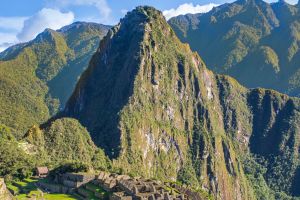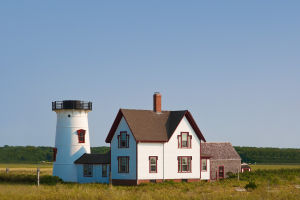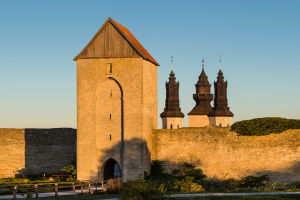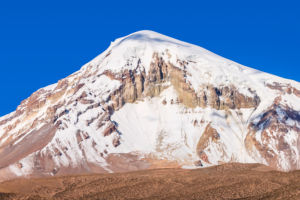
Machu Picchu is located high up in the Peruvian Andes and stands as a testimony to the creativity and ingenuity of the Incas.
The ancient citadel is often shrouded by mist and attracts millions of visitors every year.
We invite you to learn more about this fantastic site, from its actual name to the true discoverers who were there before Professor Hiram Bingham's 1911 expedition. Are you ready to discover everything about Machu Picchu?
History of Machu Picchu
Dear Lykkers, there are no books or stories about Machu Picchu; everything seems to have been kept secret by the Incas. No one knows its true name, and it is not mentioned in any old records. Machu Picchu is a mystery that fascinates many people. Everything we know comes from excavations and new discoveries that archaeologists and historians are trying to piece together to suggest the possible history of Machu Picchu.
The beginning
Machu Picchu area was inhabited by pre-Inca settlements before the Inca's arrival in the 15th century. Rock paintings and petroglyphs discovered near Machu Picchu and Aguas Calientes town are not linked to the Inca culture. The area was probably home to Amazonian groups or the Tampu community that settled the Urubamba Region.
The Great Inca Empire
Pachacutec initiated a campaign in 1440 to conquer the northern region of the Urubamba Valley, where Machu Picchu is located. In 1450 AD, Pachacutec decided to design and construct a magnificent citadel in this region. While we don't know precisely how long it took, experts think most of the main buildings were finished in about 20 to 30 years.
Rediscovery and Early Exploration
Machu Picchu remained relatively unknown to the outside world until the early 20th century. Local Quechua farmers knew about the site, but it gained international attention when Hiram Bingham III, an American historian, was guided to it in 1911. With support from Yale University and the National Geographic Society, Bingham conducted extensive archaeological excavations. His publications and lectures brought Machu Picchu to global prominence, showcasing its historical and cultural importance.
Discover the Wonders of Machu Picchu: A Journey Through History and Nature
The name Machu Picchu comes from two Quechua words: "Machu," which means "old," and "Picchu," which means "mountain," which means the Old Mountain or Great Mountain. It is a place that is very important to history and culture.
Machu Picchu was built around the 15th century, during the rule of Pachacuti Inca Yupanqui. It was both a royal state and a holy site. It is located on a mountain ridge about 2,430 meters (7,970 feet) above sea level, between the mountains of Machu Picchu and Huayna Picchu in the eastern Andes of Peru.
View of Huayna Picchu Mountain
Named a UNESCO World Heritage Site in 1983 because of its cultural and natural importance. In 2007, it was named one of the New Seven Wonders of the World, making it an even more important landmark worldwide.
Plants at Machu Picchu
Between 2,350 and 3,400 kinds of plants are thought to be present there, and many of them are in danger. This variety is due to the Sanctuary's location in the unique montane cloud forests of the Andes, which have a range of microclimates and habitats.
Plant Family - Details
Orchids - It is one of the best places in the world for orchids, with about 1,625 kinds living there. Epidendrum secundum and Masdevallia veitchiana are two well-known flowers.
Poaceae (grasses) - Representing 17% of the species reported for Peru.
Asteraceae (daisies) - Representing 10% of the species reported for Peru.
Bromeliaceae - This family includes species such as Tillandsia machupicchuensis and Guzmania inkaterrae, both of which are endemic to the Sanctuary.
Wildlife at Machu Picchu
Machu Picchu is home to many different kinds of animals. The different microclimates and ecosystems, from high-altitude grasslands to dense cloud forests, are what make it so diverse.
Animal Type
Mammals: There are 53 different kinds of mammals in the Machu Picchu Sanctuary.
Andean Spectacled Bear (Tremarctos ornatus): This is the only species of bear in South America, called "ukuku." It is important for the environment as it eats dead animals and controls pests.
White-tailed Deer (Odocoileus virginianus) and Pudu Deer (Pudu mephistophiles): These deer live in the cloud forests around Machu Picchu.
Vizcachas (Limidium peruanum): Often seen in the rocky areas close to the sites.
Llamas and alpacas: Although kept as pets, these animals are often seen grazing in the highland fields and are an important part of the area's culture.
Birds: Over 423 kinds of birds live in the Sanctuary.
Modern Significance and Tourism
Today, Machu Picchu is a major cultural and historical landmark, attracting millions of visitors each year. In 1983, UNESCO declared it a World Heritage Site, and in 2007, it was named one of the New Seven Wonders of the World. The Peruvian government, along with international organizations, works to preserve the site, balancing tourism demands with the need to protect its integrity. Machu Picchu stands as a lasting symbol of Inca ingenuity and a testament to their civilization's remarkable achievements. It is now one of the most important tourist destinations in the world.


